When I first started scuba diving, one big reason was to see large marine animals like whale sharks and manta rays in the wild – I still find it pretty wild (pun fully intended) that I am somehow able to exist within metres of these beautiful creatures. But the more I dived, the more interested I became instead in the tinier wildlife instead. I never appreciated the existence of these truly weird and wonderful macro creatures until I went muck diving in Lembeh near Manado a few years ago.
The folks of Asia Diving Vacation who sponsored this post share that same love of the macro life found in our sea waters, and asked me to dust off my collection of weird macro creature shots to show you guys just why you shouldn’t miss out on muck diving in Lembeh or other popular spots like Ambon, Mabul and Anilao or even in Singapore’s own waters. They also gave me some photography and diving tips to help any potential underwater photographers looking to create their own macro-life collection.
What is muck diving?
Muck diving usually takes place in an areas which are covered in sand or sediment. While it often seems rather bare and desolate at first glance, there are actually plenty of weird tiny creatures hanging out in the sandy bottom, so the trick here is to take it slow and be patient, keep a sharp eye out and for goodness sake practice your buoyancy and don’t kick up the fine sand because that’s when the water really becomes ‘mucky’ and spoils your photos!
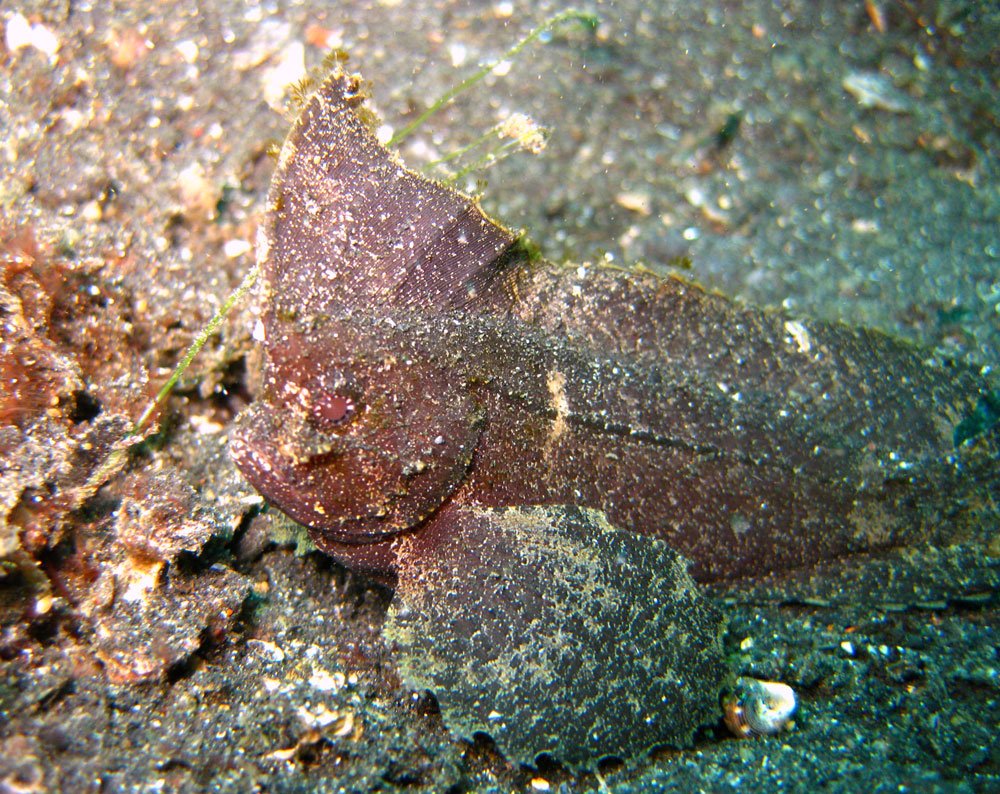
See all that brown sand, perfect for this waspfish to hide in! This is also known as the cocktaoo waspfish because of its head shape.
Tips for diving in Lembeh Straits
Some tips for you if you are thinking about diving in Lembeh Straits – the water there can be a bit colder and drop to around 24ºC around August, but this is probably the best time for photographers as these creatures are more abundant in cooler waters.
You will need some patience and time, so besides your buoyancy, work on how to breathe efficiently and make your air last as long as possible. Relax, don’t panic and suck down all that air, and hopefully you can extend your bottom time a little longer for better photos.
Tiny creatures to look out for in Lembeh
Here’s a look at some of the kind of weird critters you can find when muck diving and my favourite ones to photograph.
Nudibranchs
Nudibranchs or nudis are basically sea slugs of sorts, but there are over 3,000 different species with a whole range of shapes, sizes, colours and patterns, so it’s pretty fun to see how many different types of nudibranch you can photograph in a single dive.
This is what I photographed over 2 days diving in Lembeh Straits, such variety and colour!
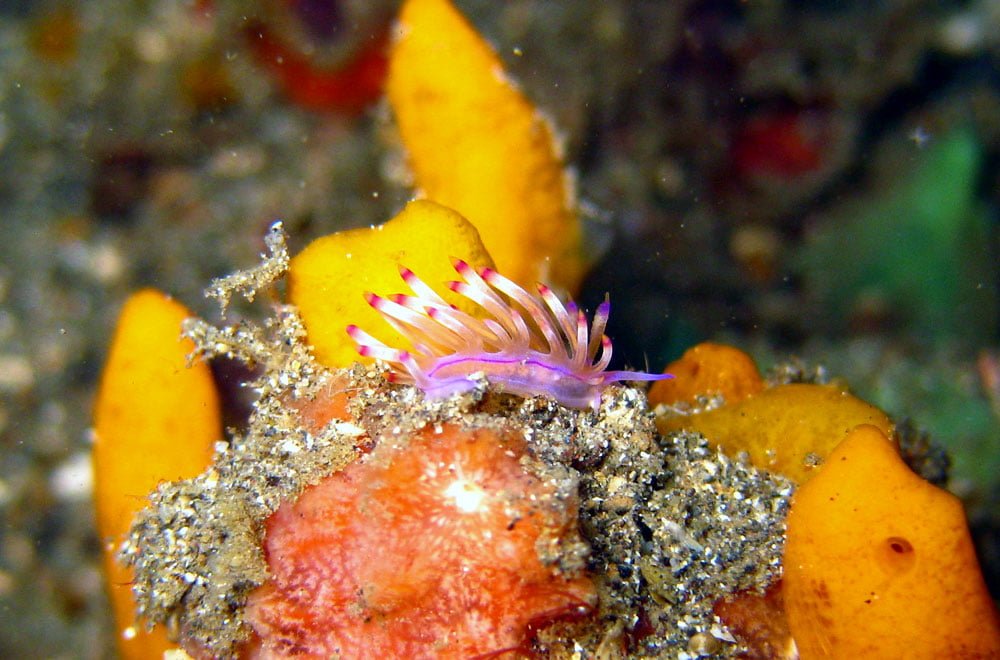
I’m loving those tendrils, and I never realised how translucent this nudibranch was – you can see right through it! I’m reasonably sure this is a Flabellina angelvaldesi
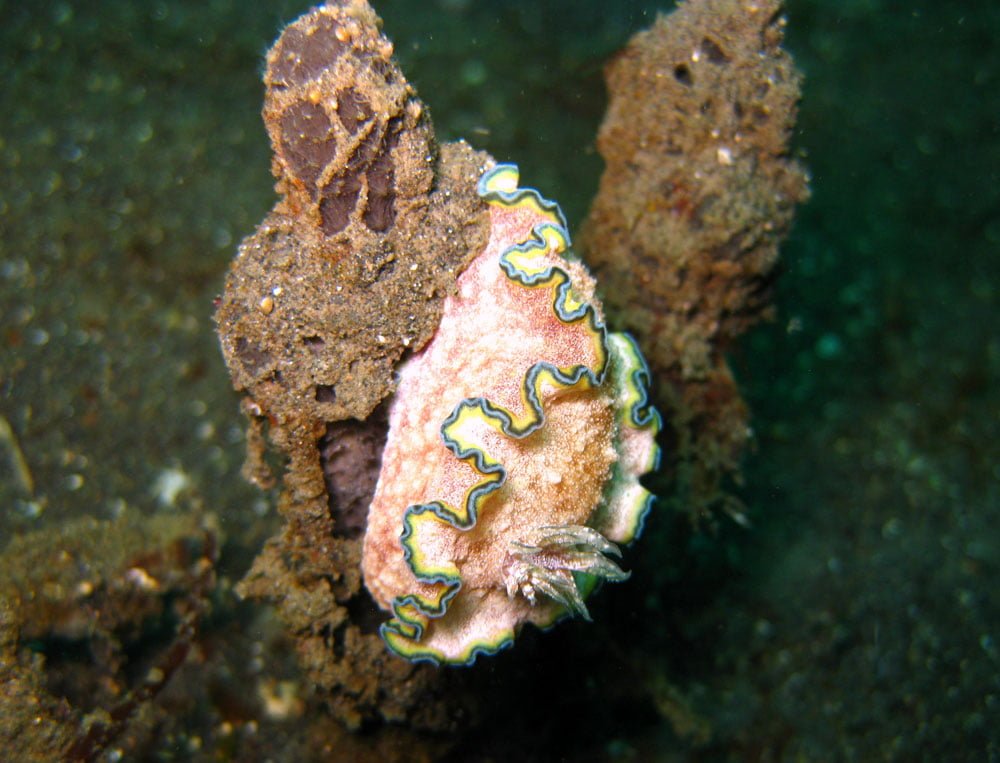
This plump pink one has such pretty frills. I’m also sure this one is probably a Glossodoris Cincta
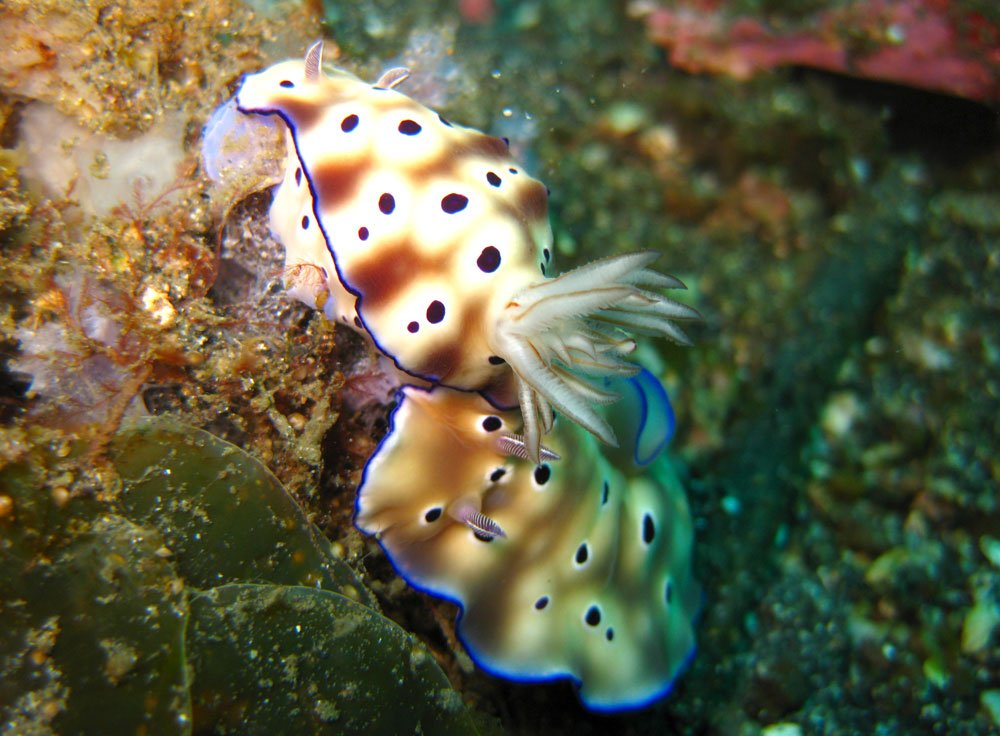
Are they mating or eating each other, who knows? I like how it looks like it’s glowing under UV light. This looks like the Goniobranchus kuniei
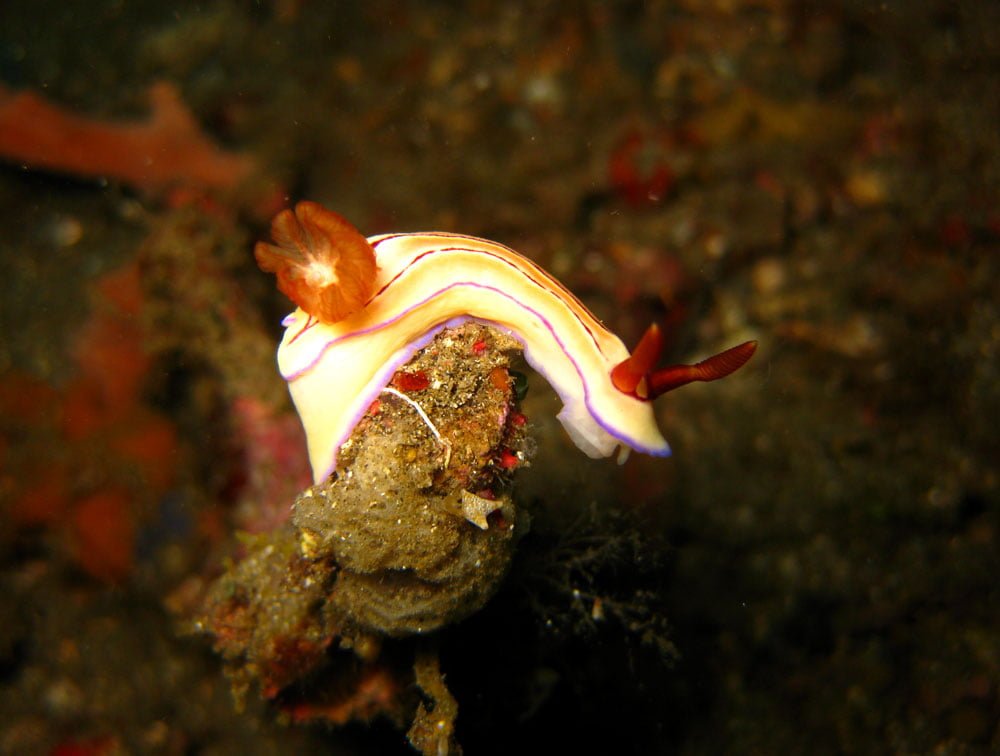
I like how this one is posed so perfectly on that bit of rock. Looks at its lovely butt flower – actually its gills. Nudibranchs are named for their latin name Nudibranchia, or naked gills. This is most probably a Hypselodoris emma
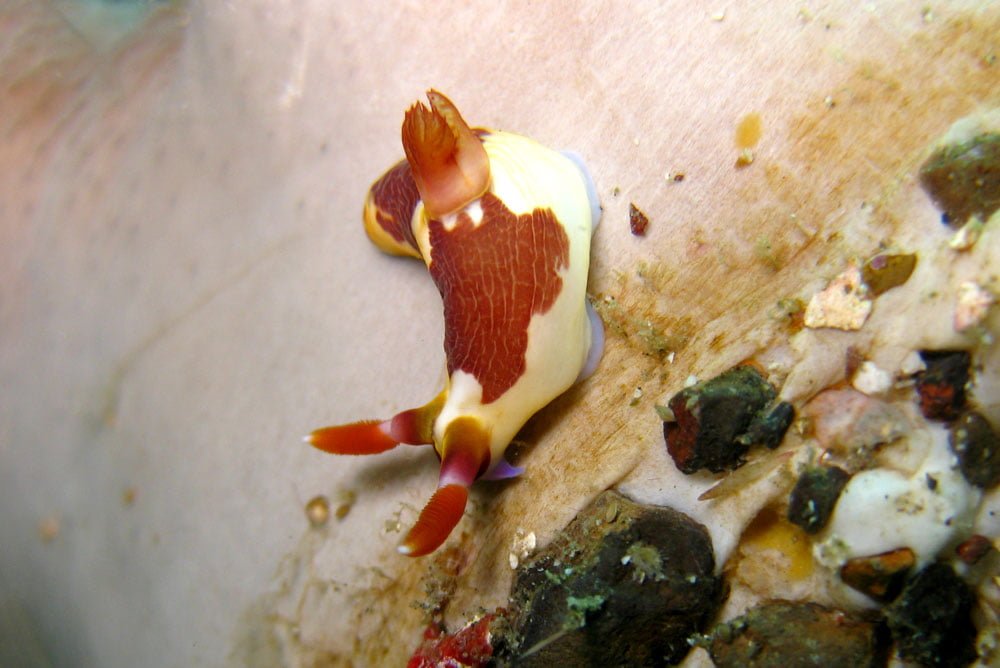
I don’t know about you, but this one looks particular crunchy for some reason. This is probably the Nembrotha chamberlaini
What I personally love is how slow-moving Nudibranchs are, so they are great for beginner photographers because you can take your time to get a good shot, and their colours just make them so fun to photograph.
Frogfish
Another really interesting creature is the frogfish, which are actually types of anglerfish. They can be tricky to find because they are usually the exact same colour and lumpiness as the coral around them. You often only realise they are actually a fish when you notice their faces!

Is that rock staring back at me? If you are lucky enough to see it, their mouths open in a pretty weird way

Giant frogfish! Most other frogfish are about palm sized, but this one was huge , about the size of a gardenia bread loaf
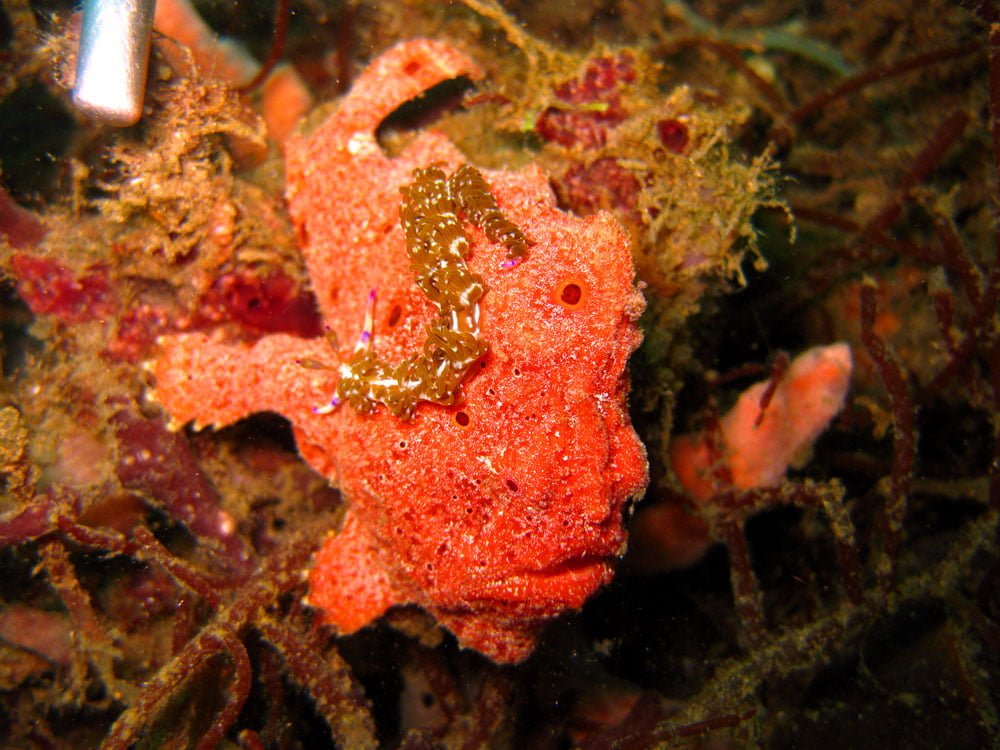
This one has a nudibranch Pteraeolidia semperi crawling on its face!
They are also great to photograph because they don’t move very much – they have these really weird side fins that they use to ‘walk’ around on instead of swimming like normal fish do. They have an air bladder which they use to control their buoyancy, which sounds a lot like human diving gear.
Seahorses
Seahorses are also strange creatures worth photographing. My favourite are the pygmy seahorses that you find on seafans, but usually at around 30m so you have to be quick about finding and photographing them if you want to spend more time underwater. They are a lot less cute than media would have you believe, and awfully floppy.
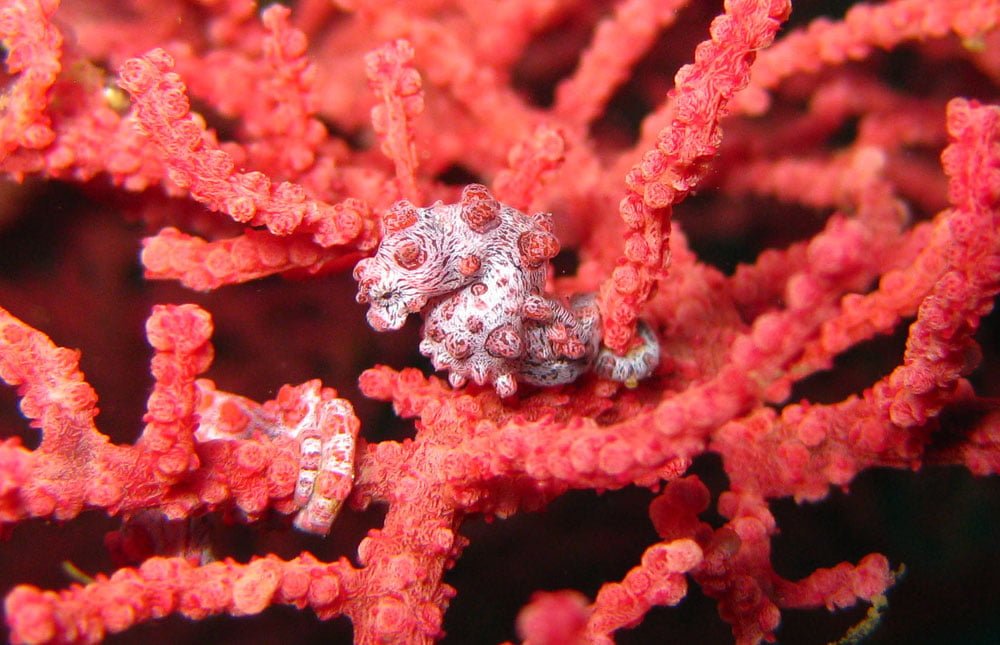
Look at its widdle face! It’s kinda lumpy to blend in with the seafan – can you spot the tail of its friend right next to it?
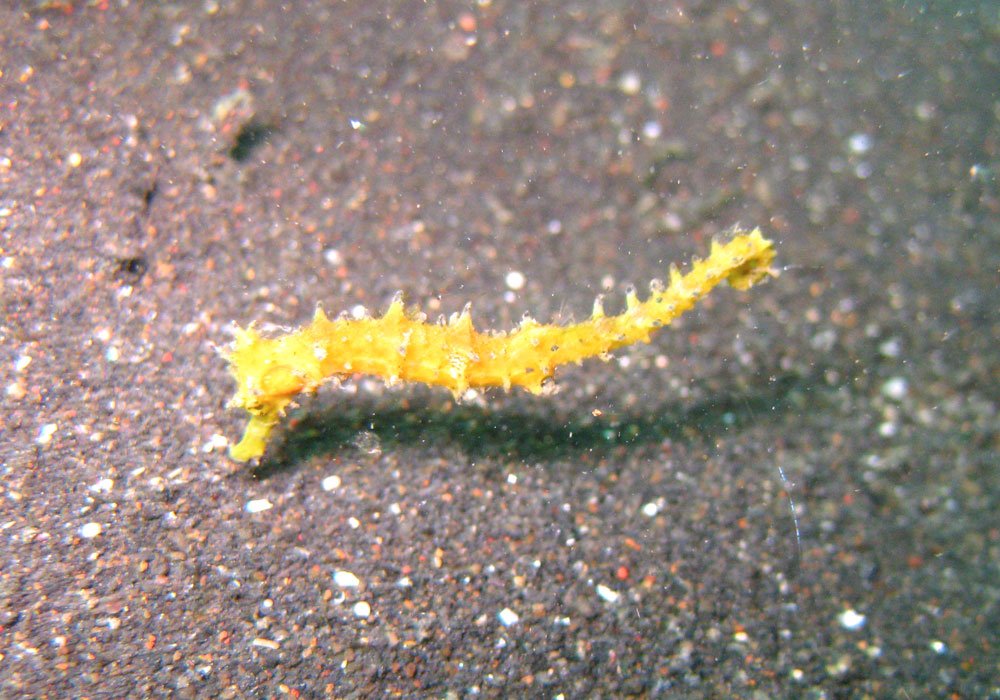
This little yellow fella was pretty small, maybe your pinky finger length at most. As you can see in the wide open area, it can barely stand up
Random weird critters
What I find fascinating about muck diving is the sheer weirdness that you can find in these waters that you just don’t get in normal reefs. There are some strange creatures in the sand, y’all.
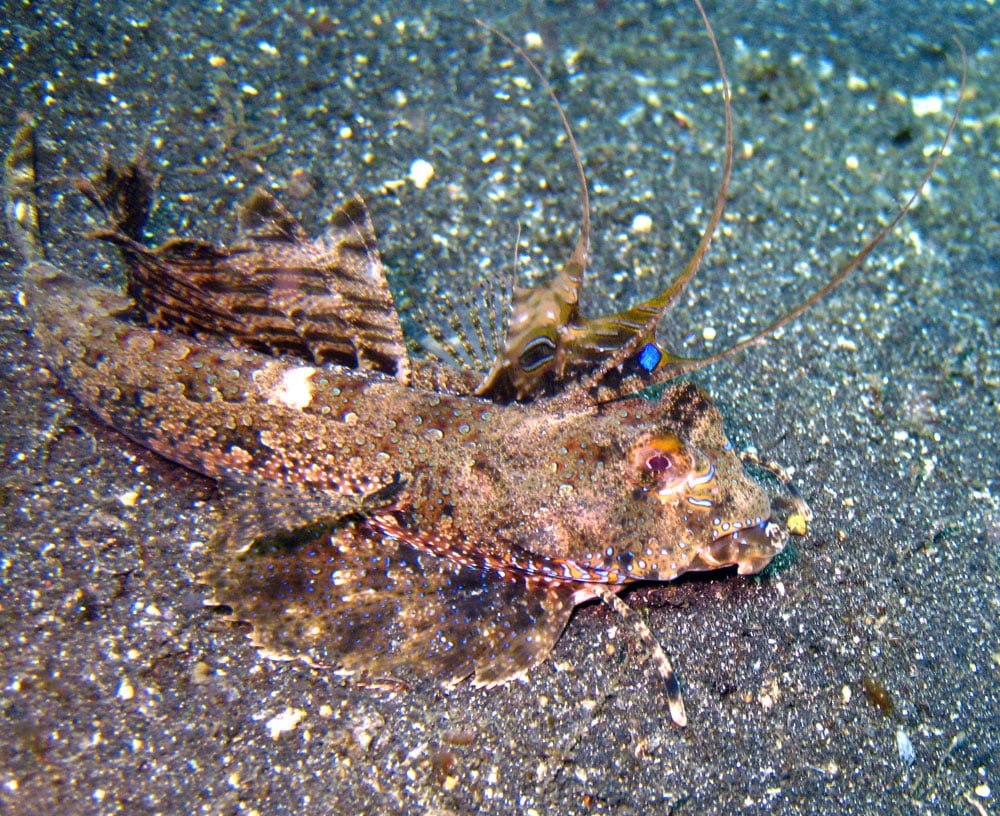
The fingered dragonet is a bottom dweller that doesn’t swim much either, mostly found scooting across the floor thanks to its side fins or ‘finger feet’ – its scientific name Dactylopus dactylopus means ‘finger footed’
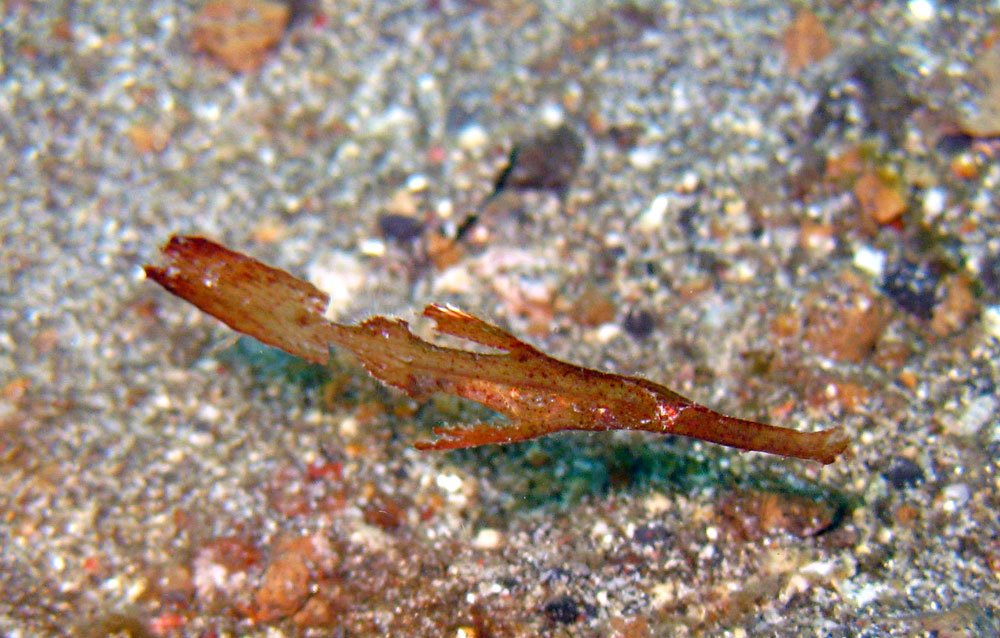
I’d never have found the ghost pipefish on my own – look at how leaf-like it is! They kinda suspend themselves in the water so it looks like a random bit of leaf floating in the water. Also, this one isn’t very big – think perhaps the length of your middle finger at best. How my guide could spot this is baffling to me.
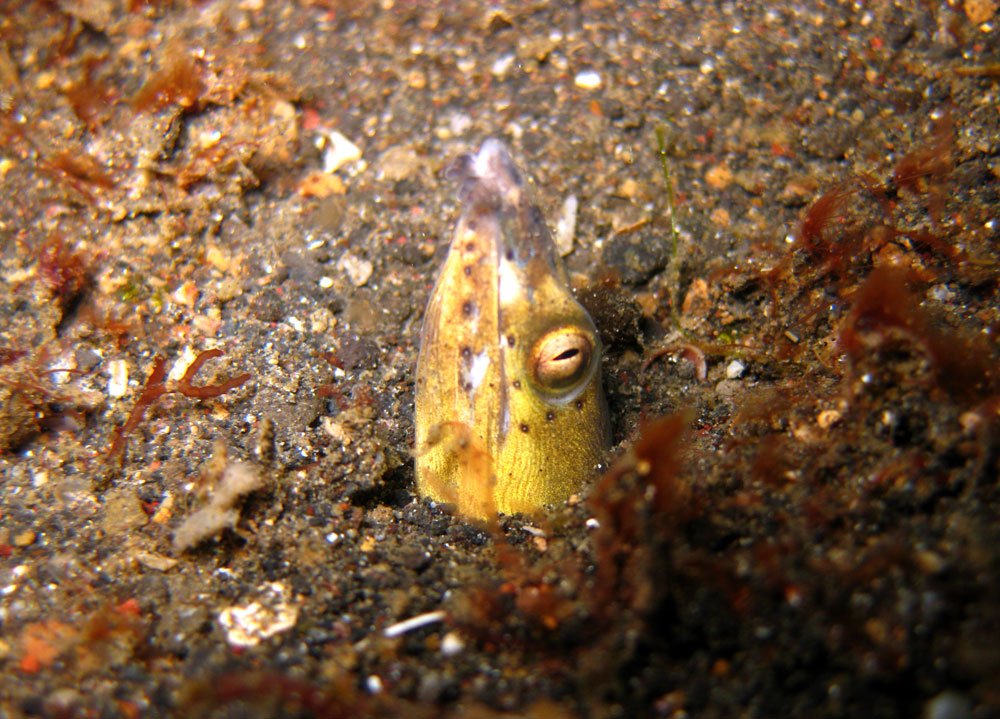
We barely spotted this head sticking out of the sand, but this black finned snake eel or Ophichthus altipennis (hurhur) can grow up to something under 1m long. It’s lying in wait for its prey.
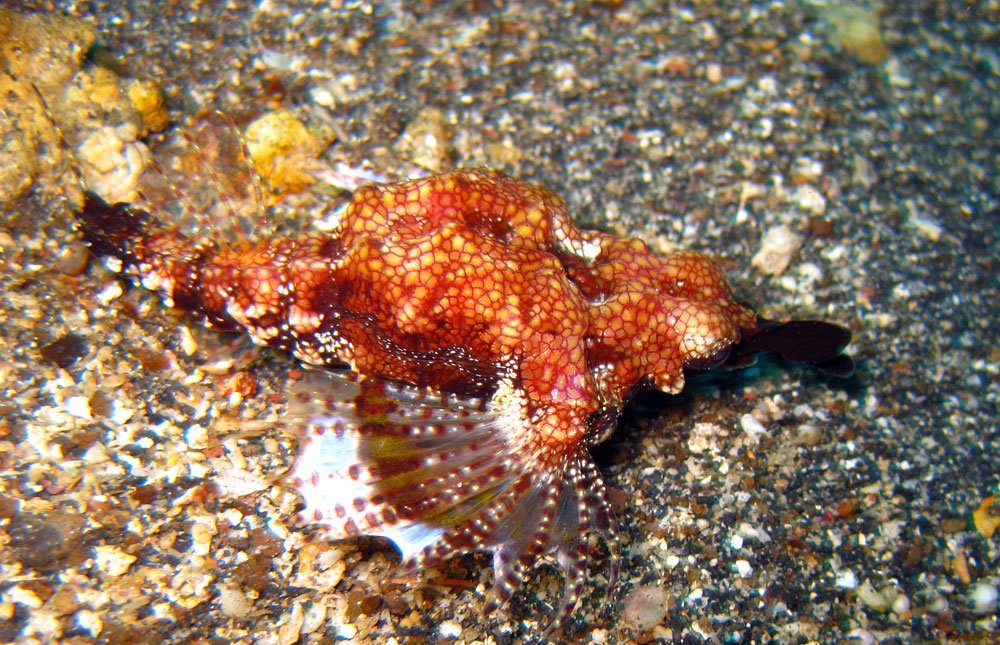
The Pegasus Seamoth is also known as a dragonfish and is another bottom dweller that likes to scuttle along the sea bed with the help of its ‘wings’ and some spindly side fins. It’s lumpy hard casing is protection and has to be shed every few days.
As you can see, scuba diving isn’t just about amazing big creatures, the smaller stuff is equally and I daresay perhaps even more fascinating, colourful and so, so strange.
Are you headed off on a scuba dive trip for tiny creatures soon? Why not check out my posts for similar spots like Anilao in the Philippines, or my full Manado and Lembeh dive logs where I saw some fascinating bigger creatures like octopi and cuttlefish as well. Singaporeans you don’t even have to travel overseas – Pulau Hantu has a whole lot of nudibranchs that I’ve only recently discovered.
This is a sponsored post by AsiaDivingVacation who specialise in dive vacations around Asia, check them out if you want to do some macro diving in Mabul Island off Sipadan, or see the underwater glory of my dream destination, Raja Ampat.


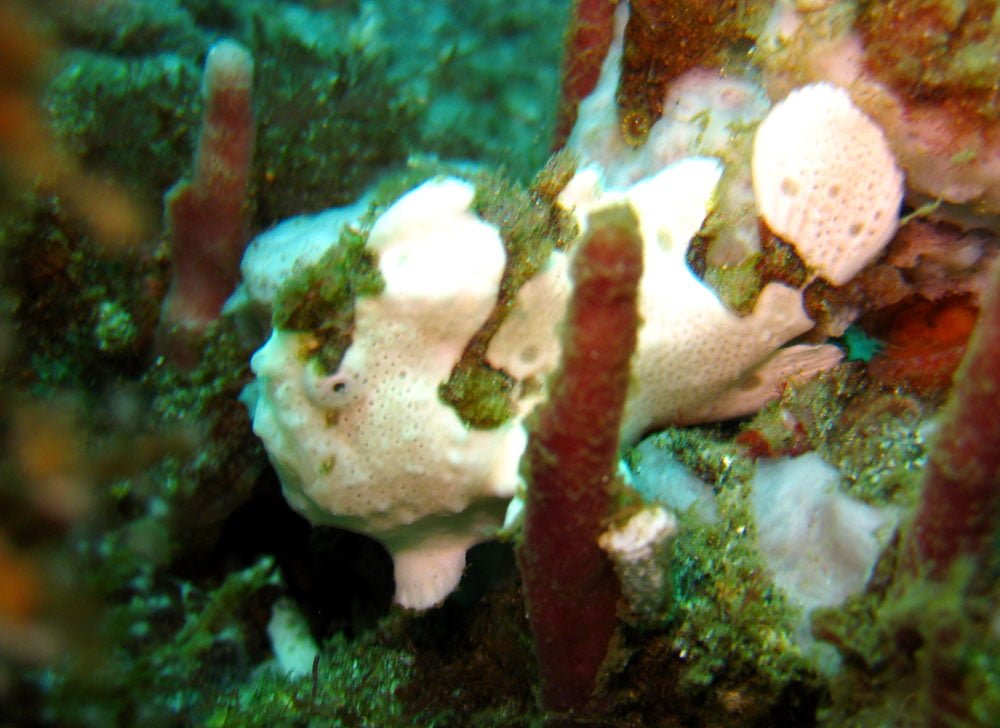
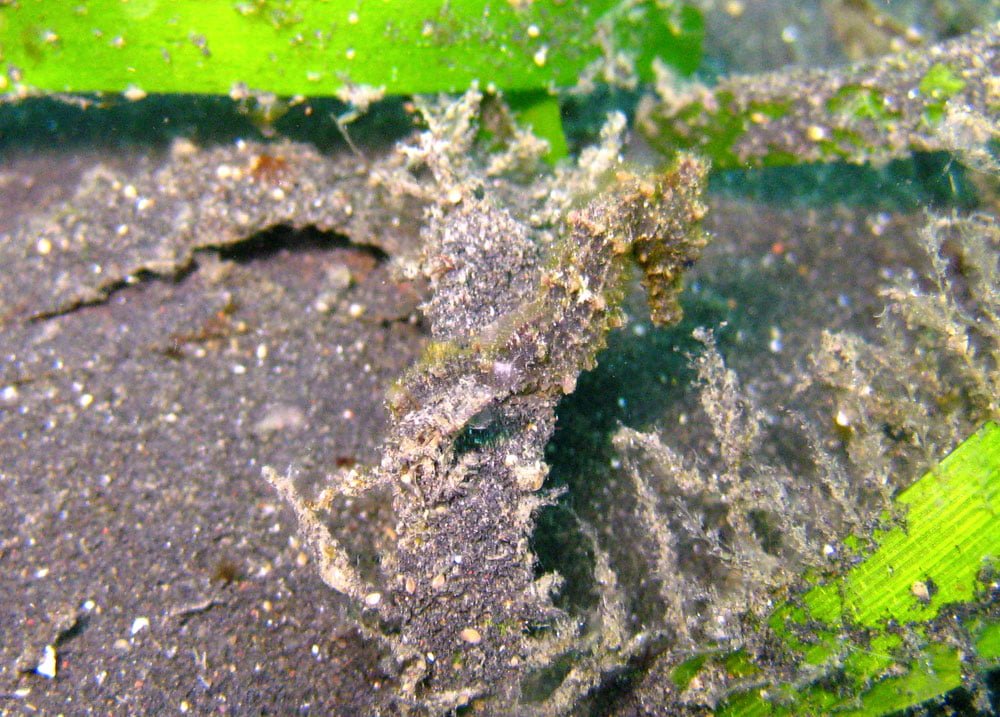
Kelleyn Rothaermel
Friday 23rd of March 2018
Incredible photos! Thanks for Sharing!
Annie Soul
Sunday 11th of March 2018
Yessss I learned to dive around Sipadan and Mabul was awesome!! Nudis and frogfish are super cool, makes me want to dive into some nice warm waters right now :)
Jaclynn Seah
Sunday 11th of March 2018
Anilao in the Philippines also has some pretty cool muck diving! :)
Mary
Saturday 10th of March 2018
Great underwater shots! Can you tell me which camera you use? So many great creatures to see where were diving. I'm in awe of how much marine life I've not seen yet. Thanks for sharing!
Jaclynn Seah
Sunday 11th of March 2018
I don't have anything very fancy for underwater photography, I was using my sister's Canon IXY Digital 25 IS in underwater mode and with a flash diffuser! I mean I thought my shots were decent, but when I handed my camera off to my instructor, he played around with the settings in manual mode and the photos were even more stunning, I couldn't believe they were taken with the same camera!
Suz
Saturday 10th of March 2018
Beautiful images! I love muck diving. Lembeh looks like it has loads of great critters, nudi's are my all time favourite!
Jaclynn Seah
Sunday 11th of March 2018
Lembeh is one of the best places in the world for muck diving, you'll definitely love it here :)
tasha amy
Saturday 10th of March 2018
Wow so many awesome little creatures, will have to add this to the bucketlist!
Jaclynn Seah
Sunday 11th of March 2018
yeah the variety is astounding :)